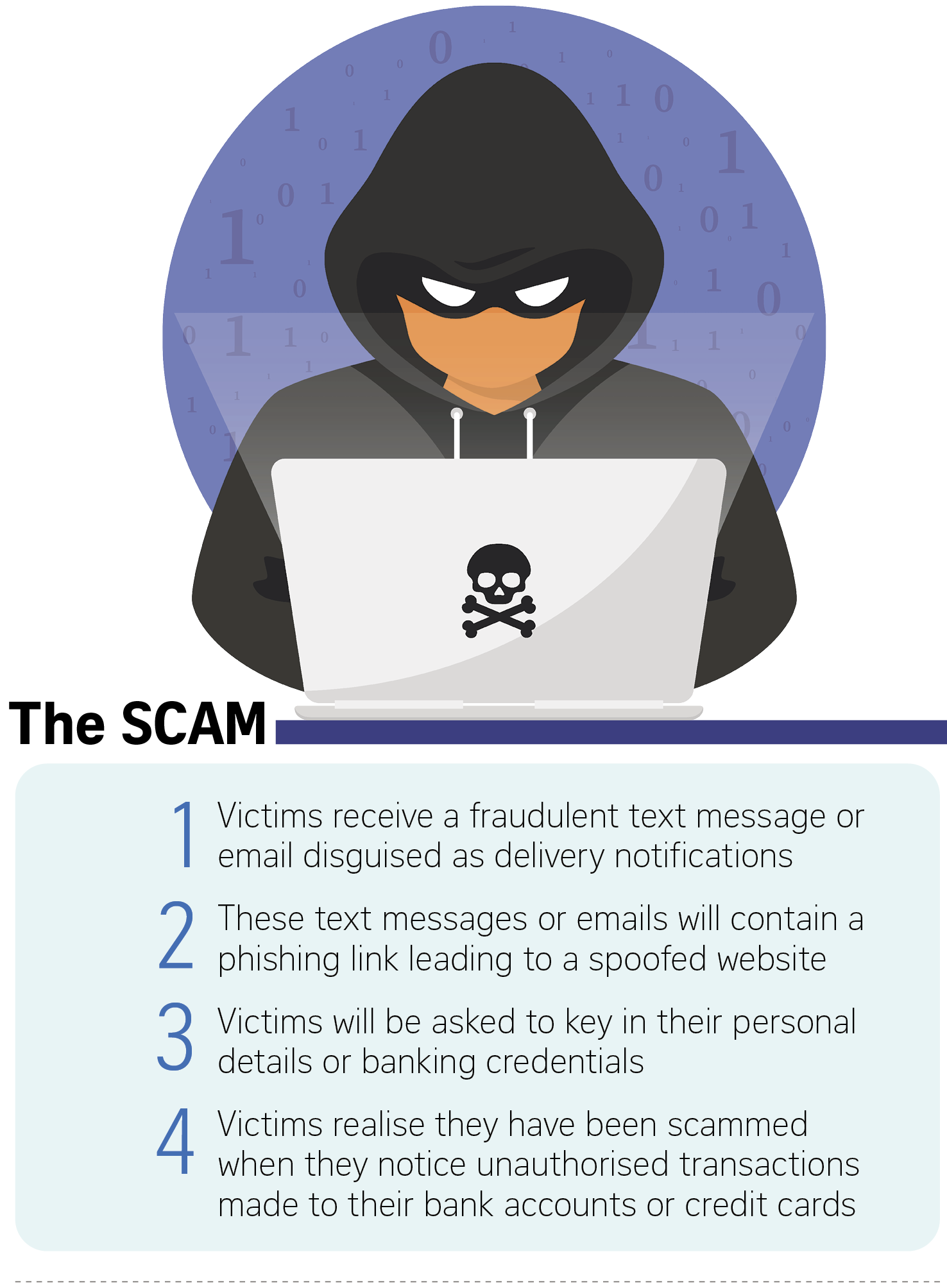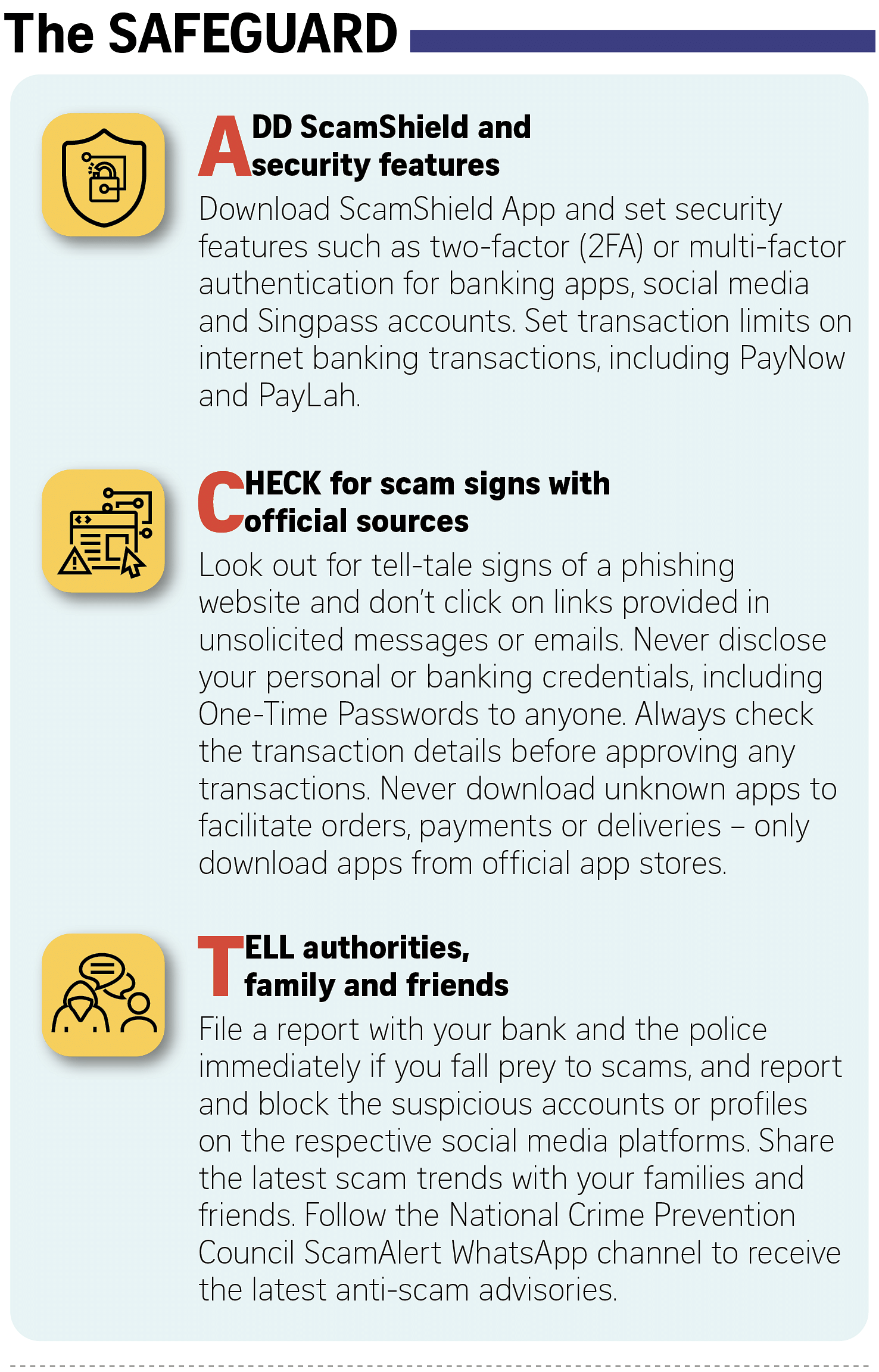BRANDED CONTENT
Asked to pay extra delivery fees to ship your parcel? It could be a scam
At least 25 people were victims of parcel delivery phishing scams in October, says the Singapore Police Force
Sign up now: Get ST's newsletters delivered to your inbox

With the upcoming festive season and major online shopping events, the police has advised shoppers to stay vigilant and guard against e-commerce-related scams.
PHOTO: GETTY IMAGES
Kareyst Lin, Content STudio
Follow topic:
You add items to your online shopping cart, check out, and pay with just a few clicks.
But while you wait for your order, you receive a text message asking for more money to ensure smooth delivery of your goods.
A simple fix to your delivery hiccup? No.
Here’s how the parcel delivery scam works, and how you can protect yourself.

The SHIELD
There were at least 25 victims of parcel delivery phishing scams in the month of October, with losses amounting to $38,000, says the Singapore Police Force (SPF).
“With the upcoming festive season and major online shopping events – such as 12.12, Christmas and New Year sales – members of the public are advised to be more cautious of e-commerce-related scams,” says Police Superintendent Rosie Ann McIntyre, assistant director of the Scam Public Education Office Operations Department, SPF.
A Singapore Post (SingPost) spokesman shares that the company has taken steps in recent months to raise awareness of delivery phishing scams that misuse their brand name.
“We do this through a new educational page on our website (singpost.com/online-security-you), as well as regular scam awareness posts on our social media platforms,” said the spokesman.
“Our customer service team will also educate and advise customers on how to verify links they receive.” For example, online links asking for payments are signs of a scam attempt, as payments to SingPost can only be done via the SingPost Mobile App, at Self-Service Automated Machine (SAM) kiosks, or any post office.
More on scams in Singapore
- Despite a growing awareness of scams, many are still falling prey to fraudsters. Find out why Singapore is a prime target for scammers, and how you can stay safe
- Stay alert during the shopping season – if prices are too good to be true, they probably are. These are some e-commerce scam signs to look out for before you checkout
The SIGNS

Suspicious text messages or emails
- How it looks like: Such notifications will appear to be sent by postage and e-commerce companies. They also tend to sound threatening or urge you to act quickly.
- How it should be: Always verify the status of your order on the respective companies’ official websites or mobile apps.
Requests for additional payment
- How it looks like: You may be asked to make extra payment to facilitate the delivery of your items. In some cases, you may be asked to install a malicious third-party app to make the payment.
- How it should be: Typically, delivery fees are charged upfront when purchases are made. Only make payments via the company’s official apps downloaded from official app stores – never through an embedded link in unsolicited text messages or emails.
Spoofed websites
- How it looks like: Dubious domain names, or slight deviations such as using “@.net”, “.org-sg” or “.com.xyz”.
- How it should be: Always double check the URL in the address bar of your browser, and verify its authenticity with the official website or sources.
Requests for sensitive personal information
- How it looks like: You may be asked to provide your full name, identification number, home address, and credit card details via embedded links in unsolicited text messages or emails.
- How it should be: Never provide your personal or banking information on a website that was accessed through an embedded link.

This is part of a series titled "Act against scams", in partnership with the Singapore Police Force.

